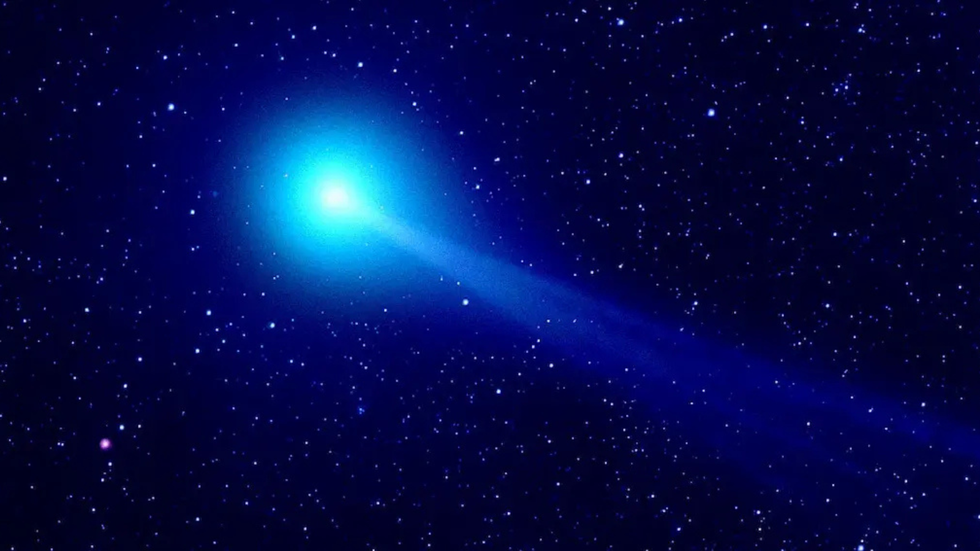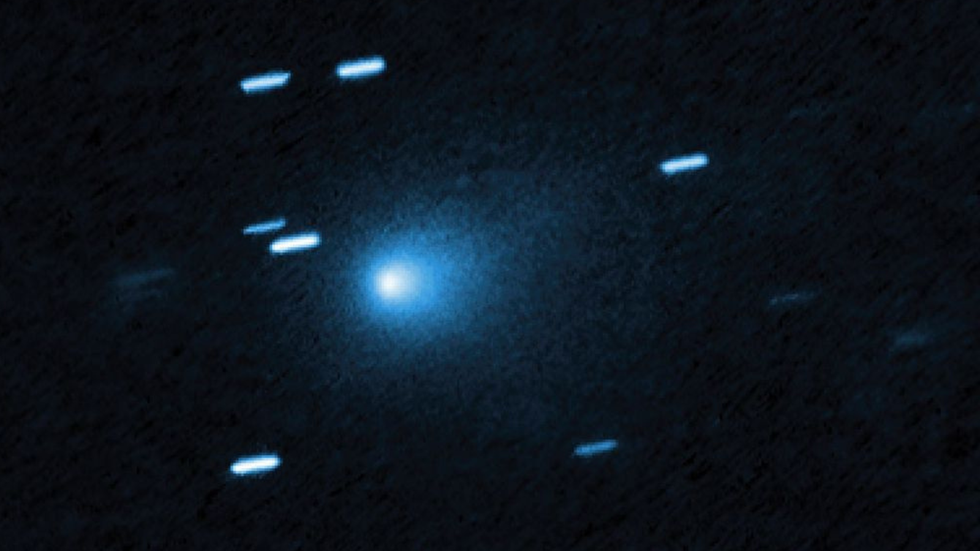Space mystery deepens over 'interstellar object' as Nasa releases new details of visitor
Early scans had suggested that the intergalactic visitor could be the largest object of its kind ever to pass through the solar system
Don't Miss
Most Read
Latest
Fresh details have been released about a mysterious object hurtling through the solar system - defying scientists' expectations.
New scans carried out on an intergalactic visitor, referred to as 3I/ATLAS, have discovered that it is most likely a rare small comet, unexpectedly pouring out high levels of carbon dioxide, and is covered in water ice.
The 3I/ATLAS object is believed to be emitting roughly 940 trillion molecules of carbon dioxide per second.
**ARE YOU READING THIS ON OUR APP? DOWNLOAD NOW FOR THE BEST GB NEWS EXPERIENCE**

The 3I/ATLAS object is believed to be emitting roughly 940 trillion molecules of carbon dioxide per second
|GETTY
The findings indicate that the interstellar object was likely formed in a star system vastly different to our own, with comets much different to the ones seen orbiting our own sun.
Scientists initially believed 3I/ATLAS had a diameter exceeding 12 miles based on the light being emitted.
But new data from Nasa's most powerful telescope has revealed that the object is only 1.7 miles in diameter.
The space rock was originally believed to be much larger due to 99 per cent of its light coming from an enormous dust cloud surrounding it, referred to as a coma.

The findings indicate that the interstellar object was likely formed in a star system vastly different to our own
|NASA
The mysterious object is currently around 298 million miles away from Earth.
The visitor was first identified by the Atlas telescope in July - and was accidentally photographed by the Vera C Rubin Observatory in Chile.
Scans initially carried out on the object estimated that it could be producing its own light and may even be the largest object ever to pass through our solar system.
These scans led Harvard astrophysicist Professor Avi Loeb to argue that it could be an artificially-created object sent by an alien civilisation.
LATEST SPACE HEADLINES FROM GB NEWS:
- 'Hand of God' spotted by Nasa satellites as astronomers left stunned by new images
- 'Habitable' dwarf planet in OUR solar system had 'conditions for alien life', Nasa reveals
- 'Accidentally calling aliens!' Expert says signals could reach 500 star systems
- WATCH: Moment mysterious fireball lights up night sky as locals 'feel the air shaking'

Harvard astrophysicist Avi Loeb argued that it could be an artificially created object sent by an alien civilisation
|GETTY
Prof Loeb said: "It shows a glow ahead of the object, not behind it.
"If it were a standard comet, we would expect some dust to be shed off the surface of the object, and the dust will be pushed behind the object as a result of the solar radiation pressure."
Despite the object's trajectory expecting to miss the Earth by 170 million miles, the Harvard astrophysicist warned that more observations are needed.
He cautioned: "As we get more data, when the sun puts more heat on this object, it might reveal its true nature.
"It could be a wake-up call for humanity if we realise that there is a smarter kid on our block."
3I/ATLAS is only the third intergalactic visitor from outside our of solar system ever to be detected.
Due to its difference from comets found in our own star system, scientists are hopeful that it may unlock mysteries surrounding what chemicals and material matter are found in other corners of the galaxy.
Researchers are expecting to uncover hints about what conditions are like in its native star system and how 3I/ATLAS was initially formed.
The object is thought to be older than the sun, which is 4.6 billion years old, and is currently travelling at speeds in excess of 150,000 miles per hour.










